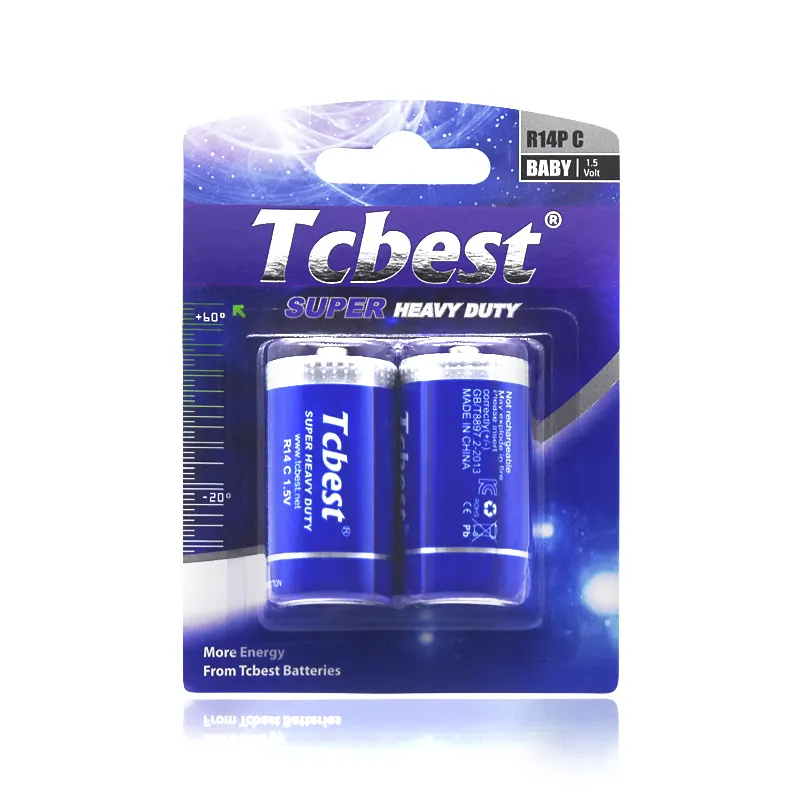Understanding the Power Behind Carbon Zinc Battery Technology
Carbon zinc batteries have been a cornerstone of portable power solutions for decades, providing reliable energy for countless consumer devices. These batteries, which combine zinc as an anode with manganese dioxide and carbon as the cathode, represent one of the most time-tested and economical power sources available today.
The fundamental design of carbon zinc batteries makes them particularly well-suited for a wide range of consumer applications. Their simple yet effective chemistry has stood the test of time, continuing to serve as a dependable power source even as newer battery technologies emerge. The combination of zinc and carbon materials creates an electrochemical reaction that produces consistent electrical energy, making these batteries especially valuable for devices with moderate power requirements.
Core Benefits of Carbon Zinc Battery Implementation
Cost-Effective Energy Solutions
One of the most compelling advantages of carbon zinc batteries lies in their economic value. The raw materials used in their production - primarily zinc, manganese dioxide, and carbon - are abundant and relatively inexpensive. This translates to lower manufacturing costs, which ultimately benefits consumers through more affordable retail prices compared to other battery types.
The cost efficiency of carbon zinc batteries makes them particularly attractive for bulk purchases and applications where frequent battery replacement is necessary. Organizations and individuals operating on tight budgets can maintain their device functionality without significant financial strain, making these batteries a practical choice for many consumers.
Environmental Considerations and Sustainability
Carbon zinc batteries present several environmental advantages worth considering. The materials used in their construction are less toxic compared to some alternative battery chemistries, making them easier to dispose of and process at end-of-life. Additionally, the simple composition of these batteries allows for more straightforward recycling procedures.
The manufacturing process for carbon zinc batteries typically requires less energy compared to the production of more complex battery types. This reduced energy footprint, combined with the use of common materials, contributes to a lower overall environmental impact throughout the battery's lifecycle.
Performance Characteristics and Applications
Stability in Various Operating Conditions
Carbon zinc batteries demonstrate remarkable stability across different operating environments. Their chemical composition allows them to maintain consistent performance in various temperature ranges, making them suitable for both indoor and outdoor applications. This stability ensures reliable operation in devices ranging from remote controls to outdoor lighting systems.
The robust nature of carbon zinc batteries also contributes to their long shelf life when properly stored. Under optimal conditions, these batteries can retain their charge for extended periods, making them excellent for emergency backup purposes and occasional-use devices.
Versatility in Consumer Applications
The adaptability of carbon zinc batteries extends to numerous consumer products. Their standardized sizes and voltage outputs make them compatible with a vast array of devices, from simple flashlights to electronic toys. This versatility eliminates the need for specialized battery types in many common applications.
The steady discharge characteristics of carbon zinc batteries make them particularly well-suited for devices with low to moderate power requirements. This consistent energy delivery ensures reliable performance in applications where sudden power fluctuations could be problematic.

Safety Features and Storage Benefits
Enhanced Safety Protocols
Carbon zinc batteries incorporate several safety features that make them ideal for consumer use. Their design minimizes the risk of leakage and includes protective measures against short circuits. The stable chemistry of these batteries reduces the likelihood of thermal runaway, a significant safety concern with some other battery types.
The inherent safety characteristics of carbon zinc batteries make them particularly suitable for household use, especially in homes with children. Their robust construction helps prevent accidents even under less-than-ideal handling conditions.
Storage and Handling Advantages
The storage requirements for carbon zinc batteries are relatively straightforward, making them convenient for both retailers and consumers. They can be safely stored at room temperature without special containment measures, and their sturdy construction reduces the risk of damage during normal handling and transportation.
The lightweight nature of carbon zinc batteries also contributes to their ease of storage and transport. This characteristic makes them particularly appealing for applications where weight considerations are important, such as portable devices and emergency kits.
Market Position and Future Developments
Competitive Market Advantages
Carbon zinc batteries maintain a strong position in the consumer battery market due to their cost-effectiveness and reliability. Their established manufacturing processes and widespread distribution networks ensure consistent availability and competitive pricing. This market stability makes them a dependable choice for both manufacturers and consumers.
The continued demand for carbon zinc batteries in specific applications ensures ongoing research and development in this technology. Manufacturers are constantly working to improve performance while maintaining the core benefits that have made these batteries successful.
Innovation and Improvement Trends
Recent developments in carbon zinc battery technology have focused on extending shelf life and improving energy density. These advancements help maintain the relevance of carbon zinc batteries in an evolving market, ensuring they remain competitive with newer battery technologies.
The future of carbon zinc batteries looks promising as manufacturers explore ways to enhance their performance while preserving their fundamental advantages. This includes research into improved materials and manufacturing processes that could lead to even more efficient and environmentally friendly products.
Frequently Asked Questions
How long do carbon zinc batteries typically last?
Carbon zinc batteries generally have a shelf life of 2-3 years when stored properly at room temperature. Their actual service life depends on the device's power requirements and usage patterns, but they perform particularly well in devices with low to moderate power demands.
Are carbon zinc batteries environmentally friendly?
While all batteries have some environmental impact, carbon zinc batteries are considered relatively eco-friendly due to their simple composition, less toxic materials, and straightforward recycling process. Their manufacturing also typically requires less energy compared to more complex battery types.
What types of devices work best with carbon zinc batteries?
Carbon zinc batteries are ideal for devices with low to moderate power requirements, such as remote controls, wall clocks, basic flashlights, and simple electronic toys. They provide steady, reliable power for these applications while remaining cost-effective.

